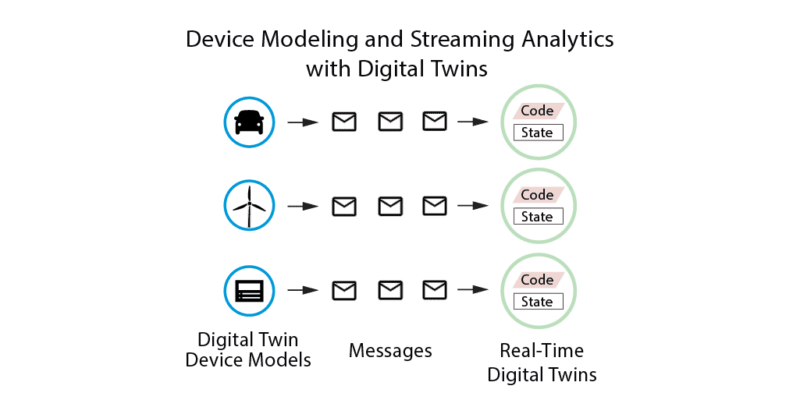Digital twins are typically used in the field of product life-cycle management (PLM) to model the behavior of individual devices or components within a system. This assists in their design and development and helps lower costs. A digital twin model of a device simulates both the device’s behavior and its interactions with other components in the system. For example, it might periodically emit telemetry messages that mimic those from a real device, and it might also accept incoming commands that modify its actions. To maximize their usefulness, these models are designed to realistically emulate the behavior of their real counterparts to the greatest extent possible. This requires that the model incorporate state variables and timing algorithms that accurately implement device behavior.
ScaleOut Software has extended the concept of digital twins beyond PLM for use in real-time streaming analytics within live, mission-critical systems. A real-time digital twin continuously ingests telemetry messages from a single device and analyzes this telemetry to produce effective, timely feedback and alerting. In order to identify emerging patterns (for example, signs of an imminent failure or the need for an alarm), it maintains dynamically evolving state information about the device, such as a record of significant abnormal events in its recent operating history, known issues, maintenance history and schedule, and the operating environment. All of this information helps put telemetry in a richer context and leads to better analysis and more effective feedback.
The key differences between digital twins and real-time digital twins can be summarized as follows:
| Characteristic | Digital Twin | Real-Time Digital Twin |
|---|---|---|
| primarily used in | product development and simulation | live systems for situational awareness |
| behavior triggered by | timing the device’s actions | incoming telemetry messages |
| state variables | implement the device’s behavior | provide context for streaming analytics |
| messages | are emitted to model device’s telemetry | are received to analyze the device’s behavior |
What’s intriguing about these related concepts is that they can be used together within a single system. In particular, digital twin models can be used to simulate devices and generate telemetry for processing by real-time digital twins. This enables the quality of streaming analytics within real-time digital twins to be assessed and optimized prior to their deployment within live systems. Here is a depiction of three digital twins sending messages to their real-time digital twin counterparts:

The ScaleOut Digital Twin Streaming Service™ provides a powerful cloud service for hosting real-time digital twins and simultaneously analyzing telemetry messages from thousands of data sources. Its ability to automatically correlate incoming messages by data source and keep state information instantly available enables real-time digital twins to respond within a few milliseconds. Integrated, aggregate analysis of key state variables across the entire population of real-time digital twins completes within seconds and runs continuously. This gives operating personnel a powerful new tool for constantly assessing the health of thousands of devices and maximizing situational awareness.
